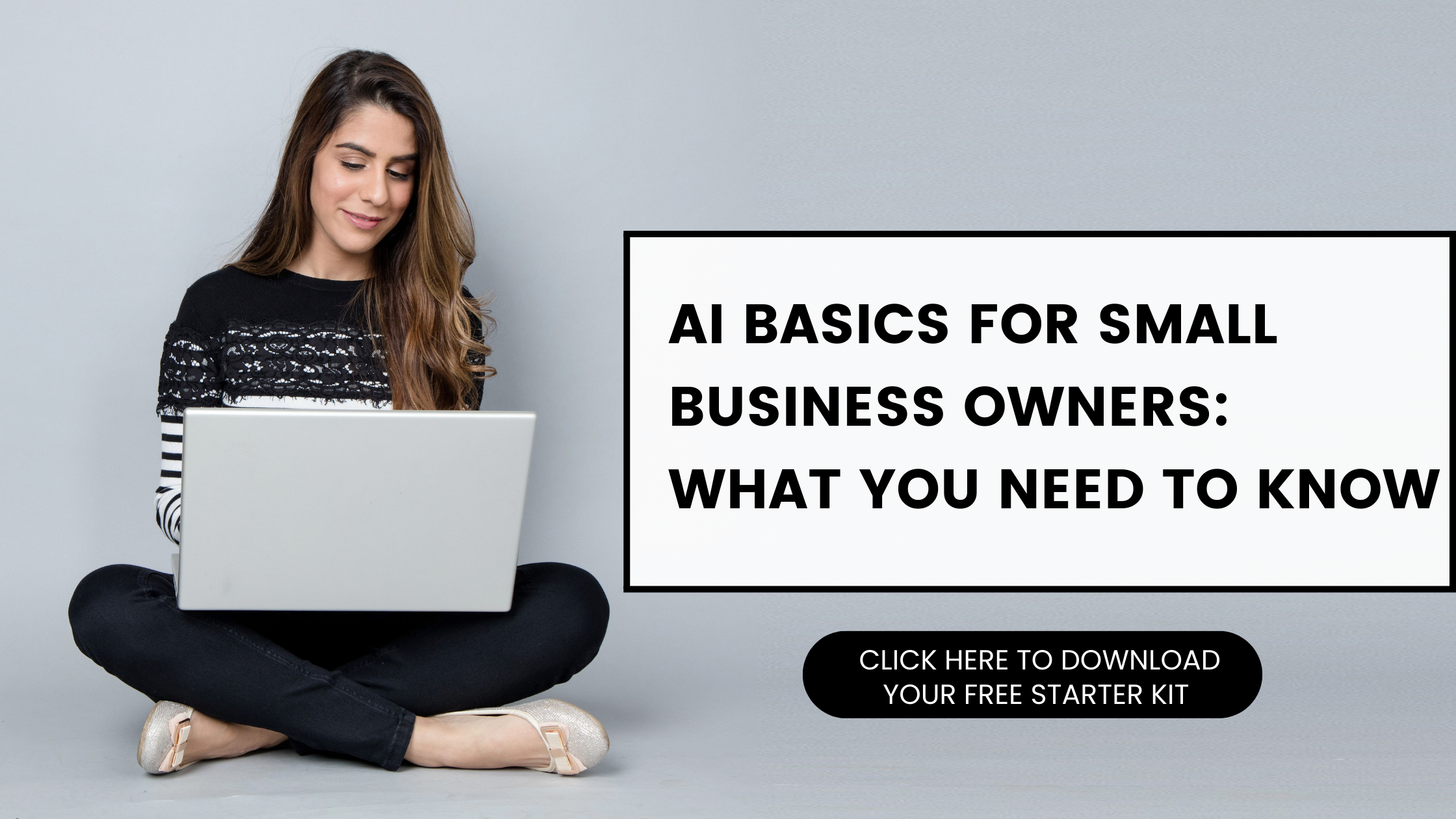Welcome! This guide is here to show you the basics of AI (Artificial Intelligence) and how it can save you time, make your work easier, and help your business grow. Whether you’re new to AI or just looking for practical ways to use it, this guide has you covered. AI is no longer just for big companies—it’s for you, too. Let’s explore how AI can transform your business and make your life easier!
1. What is AI, Really?
Think of AI as a way to make computers and software smart enough to help you with tasks that usually take human brainpower. It sounds fancy, but it’s just about solving problems faster and smarter. Here are a few key things to know:
- Learning from Data (aka Machine Learning): AI systems can learn from data and improve over time. For example, they can analyze customer trends and predict what they’ll want next.
- Understanding Human Language (aka Natural Language Processing or NLP): This allows AI to understand and respond to human language. Ever chatted with a virtual assistant or chatbot? That’s NLP in action.
- Handling Repetitive Tasks Automatically (aka Automation): AI can take over repetitive, time-consuming tasks like scheduling or invoicing, so you can focus on growing your business.
2. Why Should You Care About AI?
AI can make your life as a business owner so much easier. It can be a real game-changer if you learn how to use it correctly. Here are just a few ways it can help:
- Save Time on Repetitive Tasks: No one loves doing endless, boring tasks like data entry or sorting emails. Let AI handle that for you.
- Boost Customer Service: AI chatbots can answer questions, take orders, and provide support around the clock—even while you sleep, 24/7/365.
- Smarter Marketing: AI can analyze your customer data to help you send the right messages to the right people at the right time.
- Better Inventory Management: For e-commerce businesses, AI tools can predict trends and help you avoid overstock or running out of popular products.
3. How to Get Started with AI (Even if You’re Not a Tech Person)
You don’t need to be a tech genius to use AI in your business. It’s easier than you think to start using AI. Start small and build from there:
- Step 1: Figure out where you need help—like answering customer questions or managing social media Identify Your Pain Points
Think about the tasks you spend too much time on or the areas where your business struggles. Is it answering customer inquiries? Creating content for social media? Managing your sales pipeline? AI can likely help. - Step 2: Try Simple, User-Friendly Tools
Not all AI tools require a degree in computer science. Tools like ChatGPT can help you generate content for blogs, emails, or social media posts in minutes. Platforms like ManyChat make setting up a chatbot quick and easy. - Step 3: Start Small and Experiment
Don’t invest in expensive tools right away. Start with free trials or affordable options to see how AI fits into your workflow. Once you see results, you can scale up. - Step 4: Learn How to Prompt
Investing in learning how to use ChatGPT and master prompting is one of the smartest moves you can make for your business. Why? Because the quality of your prompts directly affects the quality of AI-generated results. With the right skills, you can save hours on repetitive tasks, create engaging social media content, write persuasive emails, and even improve customer service—all without hiring extra help. Mastering prompts ensures you’re getting the most out of AI tools, turning them into a powerful partner that helps you grow your business faster, smarter, and more efficiently. Start learning how to prompt in our Perfect Prompt Starter Pack training. Click HERE to enroll.
4. Real-Life Success Stories
Need proof that AI works? Here are some examples of small businesses that have used AI to achieve amazing results:
- A Retail Shop: They increased sales by 20% by sending AI-powered personalized emails to customers, recommending products based on their browsing and purchase history.
- A Service Business: By adding a chatbot to their website, they reduced customer response times by 50%, which kept clients happy and saved the team tons of time.
- An E-commerce Store: They avoided overstocking and running out of products by using AI tools to predict inventory needs, saving money and improving customer satisfaction.
5. A Few Things to Keep in Mind and Watch Out For
AI is powerful, but it’s not perfect. Here are a few tips to make sure you use it responsibly:
- Data Privacy: Always store customer data securely and let people know how you’re using their information. Trust is everything.
- Fairness and Bias: Make sure the AI tools you use are designed to avoid biases, so they treat everyone fairly.
- Human Oversight: Remember that AI is not perfect and it can make mistakes! So ddon’t rely on AI entirely. Keep an eye on it to make sure it’s working as expected and step in when necessary.
Conclusion
AI isn’t just for big companies anymore—it’s a powerful and easy-to-use tool for small businesses too. It’s now accessible to small businesses like yours, and it can help you save time, work smarter, and grow faster. By starting small, experimenting with the right tools, and learning along the way, you can unlock a whole new level of efficiency and creativity in your business.
The future is here—why not use it to your advantage? Stop working so hard and let AI hustle for you. Take that first step today, click HERE to get the AI Starter Kit and let AI transform the way you work.





